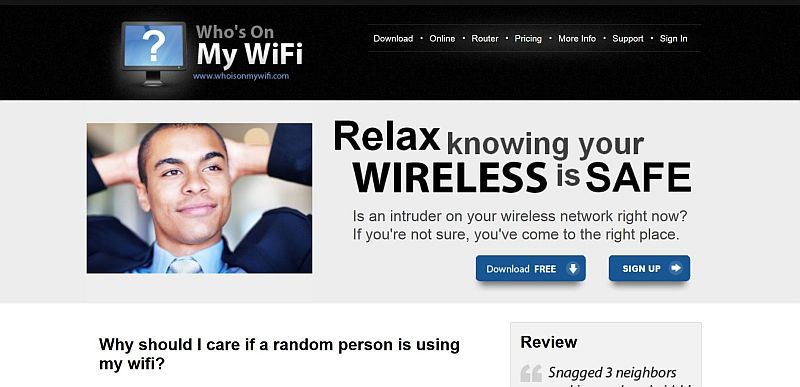Tag Archives: WPA
Who is on your wifi?

We talked extensively in class about networking, and only a little about WiFi specifically, however your WiFi setup leaves a lot of security holes, even if you have security in place (you did set a WEP, or even better a WPA or equivalent, right?).
There is a well-known activity known as wardriving, in which someone drives around a neighborhood or commercial district looking for a WiFi signal to leech off of. The problem is, if someone manages to attach to your network they have access to your whole system, even if they don’t exploit that.
If you’re interested in seeing all the devices attached to your wireless network at any given time, you’ll want to head over to whoisonmywifi.com and download their eponymous program. After set up, you will have to do a couple of network scans, after which it will show you what devices are connected to your network. If you know the device, you can set it to ‘known,’ otherwise you’ll have to do some investigation. A screenshot of my network is below:
 You can see from the scan that my router runs the network with the name of that network (SPIDERBABIES), along with its MAC address and associated IP. The MAC, or Media Access Control address is a unique address assigned to every piece of hardware for identification on a local network, and it’s one of the ways a device checks whether or not a packet is in the right place or not. You can also see it looks very similar to an IPv6 address as we talked about in class (please read the link, it thoroughly explains IPv6 and why we need it).
You can see from the scan that my router runs the network with the name of that network (SPIDERBABIES), along with its MAC address and associated IP. The MAC, or Media Access Control address is a unique address assigned to every piece of hardware for identification on a local network, and it’s one of the ways a device checks whether or not a packet is in the right place or not. You can also see it looks very similar to an IPv6 address as we talked about in class (please read the link, it thoroughly explains IPv6 and why we need it).
There is also an iMac, a Surface, a Nokia phone, a Dell desktop (ALLINONE-PC), my main media server (DESKTOP), and an HP printer. For things that aren’t named, it is very easy to determine what they are: If you copy and paste the MAC address, colons included, into a search engine it will tell you what manufacturer owns that code. It’s how I discovered the last entry is an LG smart TV I have upstairs.
But as I mentioned, if you can’t determine what a device is, you’ll need to find out. If you don’t recognize the device, or if the manufacturer isn’t one you own, you might want to consider blocking it, something you can also do from the results screen.
Below is a video that explains how it works and what it can do. Check your network!
http://www.youtube.com/watch?v=3tFPrJI9-Ts
